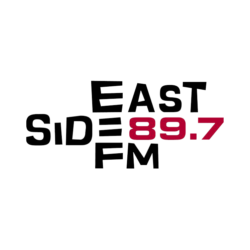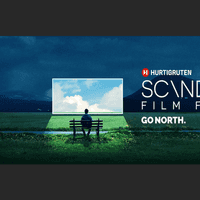Renata Arrivolo is the new tutor for the Music Foundations classes at Open Academy including Music Fundamentals, Ear Training and Sight Reading classes. We asked her a few questions about her own musical journey and her classes.
How did you first encounter music and piano? What were the steps that drew you into the world of music?
I first learnt piano at the age of seven. My grandfather who was a professional classical clarinettist. I have fond memories of playing duets with him on bass clarinet and me on piano. Later I was drawn to jazz as a teenager listening to a collection of Big Band recordings that I had borrowed from a neighbour, that featured Glenn Miller Artie Shaw and benny Goodman. The Open Academy got me started and I did a number of courses over the years such as Ear training and Sight Singing and Jazz Improvisation, which gradually led to the full-time course at the Conservatorium. I completed a degree in Jazz piano performance at the Sydney Conservatorium of Music in 2013, and things have really taken off from there.
You’re primarily a Jazz pianist. People often think of Jazz as improvised and not a theory based discipline. How has music theory aided your improvisation and music making?
Jazz actually has quite a lot of theory behind it. Yes, jazz has an aural tradition but to be a competent jazz musician you have to understand music theory. Such as intervals, scales and chords and then be able to read music and improvise. All these things give a jazz musician a palette of colours to work with so that they can compose and improvise which is really composition in real time. You have to understand rhythm and how to play with feel and variation. Any music be it Jazz or any other popular music is very limited without theory. It opens up a world of possibilities you may not have known existed and explains what the great musicians have done in the past
What is the point of ear training and sight reading to an instrumentalist, I mean you don’t have to sing to play piano right?
Well maybe not necessarily at the same time. What singing does though is make the music internalised. We develop the inner ear or what you hear in your head. This is a great tool as it becomes part of you and you can reproduce it and then transfer it back to your instrument. It also gives you the ability to look at a piece of music and hear what it sounds like in your head without having to play a note. This is an excellent tool to learn pieces quicker and for memorisation. For jazz musicians and composers being able to sing what you play is almost always more musical and comes directly from you rather than just executing intellectual concepts or physical habit. Eventually the theory and ear training all come together along with the technique, and a good musician needs all of it.
You’ve studied under some great Jazz musicians. What wisdoms did they impart on you that have kept you focused?
Aaron Goldberg came to the Sydney Conservatorium and taught us through workshops and individual lessons. In my lesson with him he got me to play a tune and improvise. He asked me if I could sing the melody whilst playing the chords. Then he asked me to sing the bass notes of the tune chord progression. Finally, he got me to sing an improvised solo whilst playing the chords of the song. The result was a more melodic musical solo. He calls it Pure Music because when you sing it comes directly from you and that you can’t do it unless you’ve worked on training the ear to hear intervals and chords. Judy Bailey was also a great influence on me as one of my teachers. She always encouraged me to find my own voice which I’m still exploring.
What are the key skills you’ll cover in the ear training course?
In ear training students learn how to recognize different important elements of music including intervals, scales, chords, chord progression and rhythms. We use singing as a tool to help us achieve this goal. A lot of ear training focuses on testing your ear by singing in class so that you can recognise chords, intervals, and scales. The sounds become internalised so that students can reproduce these sounds on their instrument and look at a piece of music and then actually hear it in their head. The other part of the class is dedicated to learning how to sight read by moving through various exercises, separating pitches and rhythms to gradually build them together. We do some harmonic analysis looking at key centres and chords and the structure of the song. I always encourage students to understand what they are doing and why. At the end of each class we then bring all skills together by singing a song.
What are the key skills you’ll cover in the Music Fundamentals class?
The Fundamentals class covers the theory of music from the very beginning. No prior knowledge is required. We start with basic notation and learn about intervals, chords, scales, and rhythm. We then use exercises in rhythm and intervals, so people learn how intervals are constructed and rhythms are made. This is then used to build the students skill set whilst understanding how to construct scales and chords. It was a method first developed by Helen Hobbs Jordan in New York, who helped not only beginners but professionals in their field such as; Bette Midler, Melissa Manchester and Tony Bennett, who needed to fill in some gaps in their knowledge and skill set. What’s so great about this course is that students build their skills gradually and continue to progress, the more they work through the exercises. We make it easy to learn music, by this brilliant method of learning
What do you enjoy about teaching at the Open Academy?
I have seen the way students at the Open Academy have had their lives enriched and transformed by doing these courses. It is a community of people from all ages and backgrounds who come together and learn about and play music. I love the inclusivity and community aspect of it. You can start at any time.
Anything else you’d love to tell us?
Over the years I have done quite a lot of courses through the Open Academy myself. It led me to the Bachelor of Music (jazz performance) and pursuing music full time as a career. It has changed my life entirely for the better. I encourage anyone who is interested in music to come to the Conservatorium and do a course to absorb the atmosphere and make some new friends. Learning about music in this group environment will enrich your life. Whether you have played/sung for a long time or you are just beginning, there is always something to learn in this enriching musical environment. The Open Academy has something for everyone who loves music.
Open Academy Winter Term Short Courses start the week of 23 July. Renata teaches:
Music Fundamentals: https://openacademy.sydney.edu.au/course/SCMF1
Ear Training and Sight Reading: https://openacademy.sydney.edu.au/course/SCET1

Share "Con Open Academy Winter Courses In July"
Copy








